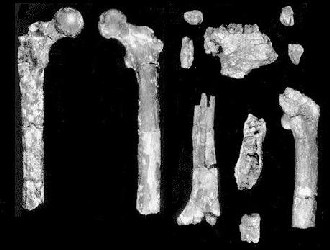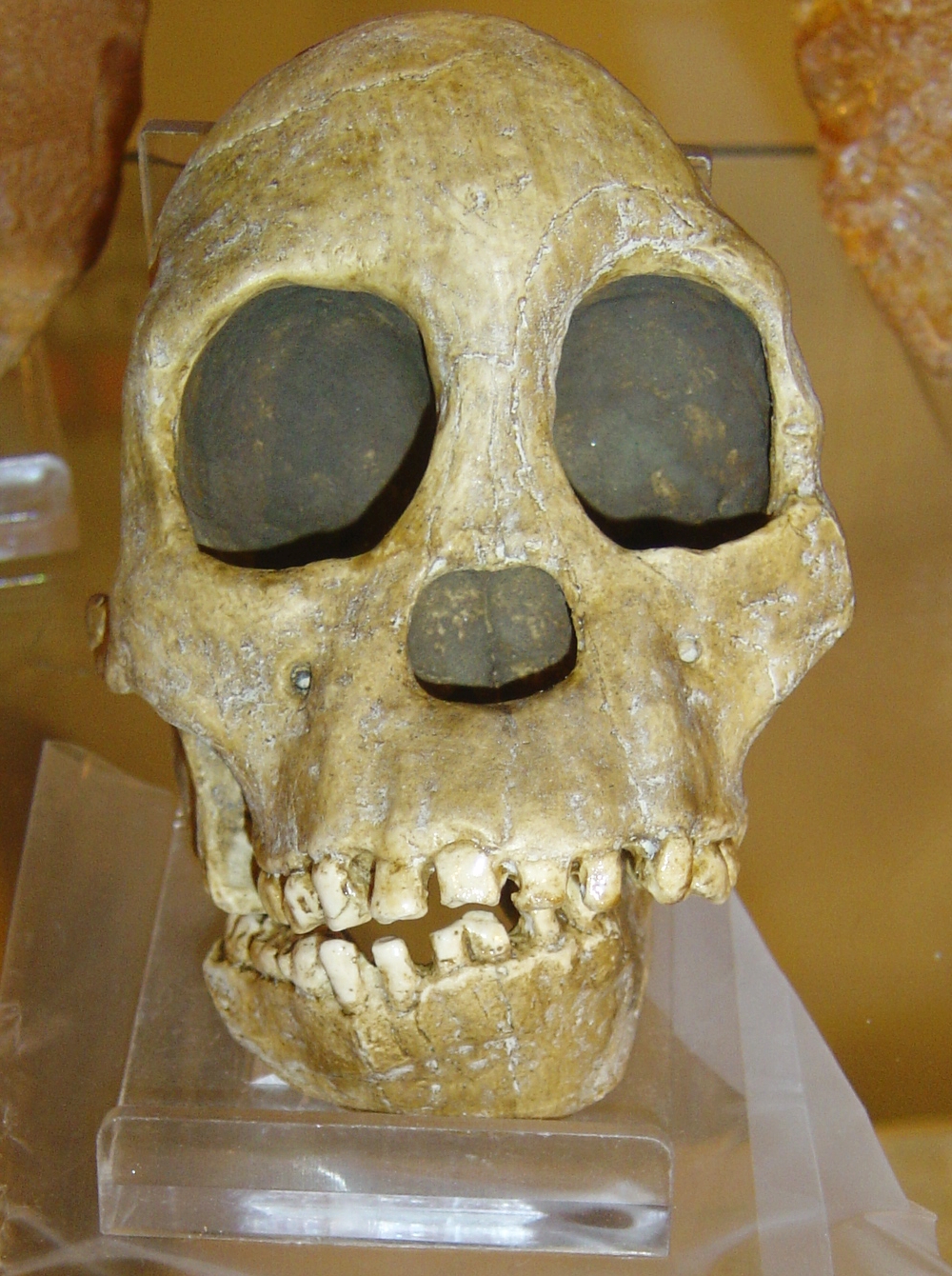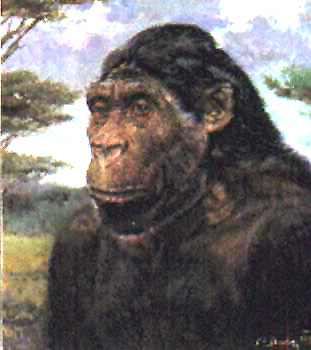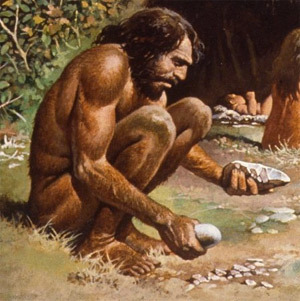You see, yesterday's post reminded me that I have not made a list of this yet, so I set out to fix the issue.
So, ladies and gentlemen, here's a little post about how we came to be.
1. Sahelanthropus tchadensis

This species was discovered in Chad in Central Africa, and it is the oldest known hominid species at the moment. It is said that it lived 6 or 7 million years ago. It is quite a controversial thing, because this skull is the one and only skull of its kind that was ever discovered, so scientists are still debating its place on the evolutionary tree. The size of this skull is about as big as a chimpanzee's.
2. Orrorin tugenensis

These fossils were discovered in Kenya, in deposits of about 6 million years. It is said that this species was of the size of chimpanzee's and they were adapted to both bipedality and tree climbing, but since these bone fragments were the only things discovered quite a few scientists are still skeptical about it.
3. Ardipithecus ramidus

This species was first thought to belong to the genus Australopithecus, but when some more fossils were unearthed, it migrated to the Ardipithecus. It lived around 4.4 million years ago, it was about 120 cm tall, and it weighted about 50 kg. Their head was about the size of a chimpanzee's, and they lived in forests.
4. Australopithecus anamensis

There are 21 fossils of this species, and they were discovered in Kenya. They lived between 4.2 and 3.9 million years ago, and were very human-like.
5. Australopithecus afarensis
They lived between 3.9 and 3 million years ago, with skulls similar to chimpanzee's - except the humanlike teeth. They were bipedal, adapted to walking and not running. They were very strong, and the females were a lot smaller than the males. They grew up to 152 cm tall.
6. Kenyanthropus platyops

There is only a single skull of this species discovered yet. As you probably already guessed it, it comes from Kenya. It is about 3.5 million years old.
7. Australopithecus africanus

They lived between 3 and 2 million years ago. They were bipedal, and their skull was larger than that of chimps'. They were bigger than the previous ones, and even more human-like.
8. Australopithecus garhi

The species was described only by a partial skull, which is dated to be about 2.5 million years old. It looks to be a primitive species, and resemble apes more than humans.
9. Australopithecus sediba

They were discovered in South Africa, and they lived between 1.7 and 1.9 million years ago. They are the transition between A. africanus and Homo, with a slight incline toward the Homo part. They were bipedal, with arms suitable for climbing. They were short (of about 130 cm).
10. Australopithecus aethiopicus

They existed between 2.6 and 2.3 million years ago, and they are known from a single skull (some other fossils are said to belong to the same species, but it is still debated). This species is very primitive, with very small brains.
11. Australopithecus robustus

They lived between 2 and 2.5 million years ago. They had small front teeth, but massive grinding teeth, which means that their food was mostly tough that needed a lot of chewing. They were kind of intelligent, since it is said that they used bones as digging tools.
12. Australopithecus boisei

They lived between 2.1 and 1.1 million years ago, and they had even bigger molars than the previous one (2 cm across). Some scientists say that these are just a variant of the robustus species.
13. Homo habilis

They lived between 2.4 and 1.5 million years ago. They are still primitive, but they have considerably larger brains than the previous ones. They were capable of rudimentary speech. They were about 127 cm tall, and about 45 kg in weight.
14. Homo georgicus
The fossils were found in Georgia, and they seem to be a transit species between H. habilis and H.erectus. They lived around 1.8 million years ago, they grew to 1.5 m tall, and they had pretty large brains, considering...
15. Homo erectus

They lived between 1.8 million and 300000 years ago. They had even larger brains than the previous ones. They were more robust than humans, which means they were a lot stronger. They were more efficient at walking than modern humans (because modern human skeletons were adapted to give birth to larger-brained infants). Fossils of H erectus can be found all over Africa, Asia and Europe. They used fire, and stone tools.
16. Homo ergaster

They were discovered in Kenya, and they lived 1.7 million years ago. The fossils of this species are well known, because they were the reason why the single species hypothesis was dropped (which states that there was never more than one hominid species at any point in history).
17. Homo antecessor

They were found in Spain, and they lived about 780000 years ago, which means they are the oldest confirmed European hominids. They seem to be pretty modern from the outside, but they were still primitive. Some scientists don't think they were real, because the whole species was described using a juvenile specimen.
18. Homo heidelbergensis (or Homo sapiens)
.jpg)
The first forms of Homo sapiens appeared about 500000 years ago. Their brains were larger than the previous ones, but smaller than most modern humans. They were less robusts than erectus, but still more robust than modern humans.
19. Homo sapiens neanderthalensis

They lived between 230000 and 30000 years ago. They had bigger brains than modern humans, and they had a bigger bulk. They were adapted to cold, which means they were short, solid and had short limbs. Men were of about 168 cm tall. They were very strong, and they endured brutally hard lives. They used a large number of tools and weapons, and they were amazing hunters. They were the first people who buried their dead.
20. Homo floresiensis

They lived about 18000 years ago on the island of Flores. They were about 1 meter high, and they used stone tools. It is said that this species is actually a dwarf form of Homo erectus, which would not be stupid, since large mamals developed dwarf forms when they evolved on small islands. They were fully bipedal, and hunted dwarf elephants.
21. Homo sapiens sapiens

They appeared 195000 years ago, and about 40000 years ago, with the appearance of the Cro-Magnon culture their tools became more sophisticated. They started to make artwork, todecorate things, to make musical instruments and paintings over the next 20000 years.
